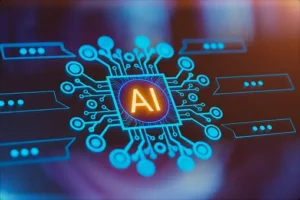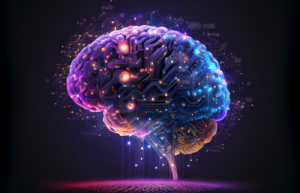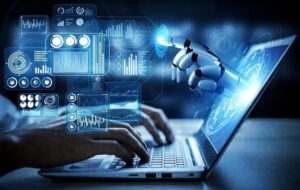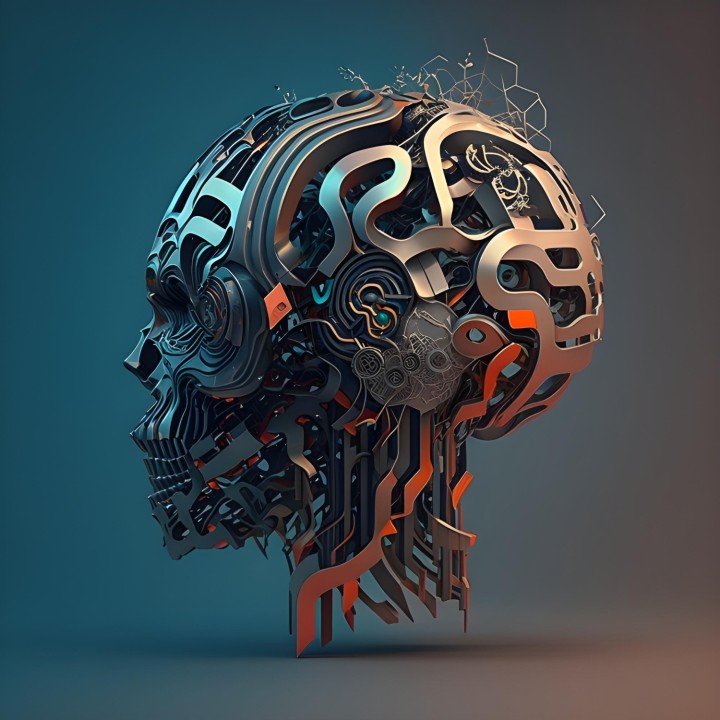Generative artificial intelligence (AI) is highly valued for its capacity to produce original content across various mediums such as text, images, video, and music. Utilizing AI algorithms, it analyzes data patterns to emulate styles and structures, effectively replicating diverse forms of content. Notably, generative AI applications extend to creating deep-fake videos and synthetic voice messages.
This subset of artificial intelligence operates within a broader spectrum of technologies that empower machines to perform tasks once solely reliant on human intelligence and judgment. Its capabilities include developing systems with cognitive abilities for data analysis, continuously refining performance through iterative processes.
Understanding the advantages and operational aspects of AI and generative AI is crucial, alongside acknowledging the ethical considerations that accompany their deployment.

Here are the key differences between Generative AI and Traditional AI:
1. Focus and Output:
– Traditional AI: Focuses on analyzing existing data to enhance efficiency, accuracy, and decision-making within predefined boundaries.
– Generative AI: Designed to create new content such as text, images, music, and models based on patterns in existing data.
2. Implementation:
– Traditional AI: Applied in predictive analytics, natural language processing (NLP), autonomous systems, and other structured tasks.
– Generative AI: Utilized in creative fields like content creation, design, entertainment, and scientific research for generating hypotheses and models.
3. Transparency:
– Traditional AI: Models are generally more transparent and interpretable, allowing users to understand decision-making processes.
– Generative AI: Often functions as “black boxes,” especially with deep learning techniques, making it less transparent in how it generates content.
4. Performance and Efficiency:
– Traditional AI: Typically more efficient for specific, well-defined tasks that do not require extensive computational resources.
– Generative AI: Requires significant computational resources and training time, particularly for large models like GPT-4, limiting scalability compared to traditional AI.
5. Data Requirements and Training:
– Generative AI: Relies on large datasets for training to ensure diverse and high-quality content generation.
– Traditional AI: Can operate effectively with smaller datasets, depending on the complexity of the task and the model used.
6. Adaptability and Flexibility:
– Generative AI: Adaptable across different domains and capable of generating content in various fields.
– Traditional AI: Requires specific training for each unique task or application, limiting its flexibility compared to generative AI.
These differences highlight how each type of AI serves distinct purposes and is suited to different applications, depending on the goals and requirements of the task at hand.

To humanize the characteristics of Generative AI and Traditional AI, we can compare them in the context of human capabilities and behaviors:
1. Generative AI (GA):
– Creativity: Like an artist or writer, Generative AI can create new content such as texts, images, and music, akin to humans generating artistic works.
– Adaptability: Similar to how humans learn and adapt to new situations, Generative AI can adjust its outputs based on new data and environments.
– Imagination: It can simulate imaginative thinking by generating hypothetical scenarios or new designs, resembling human creativity and innovation.
2. Traditional AI (TA):
– Analytical Skills: Traditional AI functions similar to a skilled analyst or researcher, capable of processing and interpreting large amounts of data with precision.
– Task Specificity: Like a specialized worker, Traditional AI excels in specific tasks or domains where its programming or training is focused.
– Predictive Ability: Similar to how humans make predictions based on patterns, Traditional AI can forecast outcomes or trends based on historical data.
In a human context, Generative AI might be likened to a creative artist exploring new ideas and producing original works, whereas Traditional AI functions more like a dedicated analyst or expert in a particular field, providing insights and predictions based on established knowledge and data. Both types of AI have their strengths and roles, reflecting different aspects of human capabilities adapted to digital form.

Certainly! Let’s explore the advantages of Generative AI and Traditional AI in a humanized context:
Advantages of Generative AI (GA):
1. Creativity and Innovation:
– Like a talented artist or designer, Generative AI can create original content such as art, music, and literature. It mimics human creativity by generating new ideas and designs based on existing patterns and data.
2. Adaptability and Learning:
– Similar to how humans learn from experience, Generative AI can adapt to new data and environments. It continuously improves its outputs over time without needing explicit instructions, much like how humans refine their skills through practice.
3. Personalization:
– Like a skilled personal assistant, Generative AI can tailor its outputs to individual preferences and needs. It can provide customized recommendations, content, and interactions, enhancing user experience and satisfaction.
4. Exploration and Hypothesis Generation:
– Like a curious scientist or researcher, Generative AI can explore new possibilities and generate hypotheses. It aids in discovering novel insights and solutions in various fields, including scientific research and creative industries.

Advantages of Traditional AI (TA):
1. Analytical and Decision-Making Skills:
– Similar to a seasoned analyst or strategist, Traditional AI excels in processing and analyzing large volumes of data. It can extract meaningful patterns and insights to support informed decision-making in business, healthcare, finance, and other sectors.
2. Efficiency and Automation:
– Like a reliable assistant or worker, Traditional AI automates repetitive tasks and processes. It enhances efficiency by handling routine operations with speed and accuracy, freeing up human resources for more complex or creative endeavors.
3. Predictive Capabilities:
– Similar to a proficient forecaster or predictor, Traditional AI can forecast trends and outcomes based on historical data and patterns. It aids in anticipating market trends, customer behavior, and operational needs, enabling proactive decision-making.
4. Specialized Expertise:
– Like a knowledgeable specialist or expert, Traditional AI possesses deep domain-specific knowledge. It excels in specialized tasks such as natural language processing, image recognition, and robotics, where precise expertise is crucial.
These humanized perspectives illustrate how Generative AI and Traditional AI emulate and extend human capabilities in distinct ways, offering complementary advantages across various applications and industries.

Here’s a humanized perspective on the limitations of Generative AI and Traditional AI:
Limitations of Generative AI (GA):
1. Creativity Constraints:
– Similar to how humans may struggle with creative blocks, Generative AI can produce outputs that lack originality or fail to meet artistic standards. It may struggle to innovate beyond existing patterns or data limitations.
2. Ethical Concerns and Misuse:
– Like how humans face ethical dilemmas, Generative AI can be misused to generate deceptive content like deep fakes or misinformation. This misuse raises concerns about trustworthiness and the potential for harm.
3. Quality Control Issues:
– Like a craftsman striving for perfection, Generative AI may produce outputs of inconsistent quality. Ensuring accuracy and reliability in generated content can be challenging, particularly with complex or nuanced tasks.
4. Bias and Fairness Challenges:
– Similar to how biases can affect human judgment, Generative AI models may inadvertently perpetuate biases present in training data. This can lead to unfair or discriminatory outcomes in the content it generates.

Limitations of Traditional AI (TA):
1. Lack of Contextual Understanding:
– Similar to human limitations in understanding complex contexts, Traditional AI may struggle with nuanced or ambiguous situations. It may misinterpret data or fail to consider broader implications beyond its programmed rules.
2. Rigidity and Adaptability Issues:
– Like how humans may resist change, Traditional AI can be inflexible when faced with new data or evolving environments. It may require frequent updates or retraining to maintain relevance and effectiveness.
3. Transparency and Interpretability Challenges:
– Similar to human communication barriers, Traditional AI models can lack transparency in decision-making processes. This opacity makes it difficult for users to understand how decisions are reached, affecting trust and accountability.
4. Over-reliance on Data Quantity:
– Like how humans may overlook qualitative insights, Traditional AI often prioritizes large datasets for accurate predictions. This reliance can limit its effectiveness in scenarios with limited or incomplete data.
These humanized perspectives highlight the nuanced challenges faced by both Generative AI and Traditional AI, emphasizing the importance of ethical considerations, adaptability, transparency, and quality control in their development and deployment.
To Follow Us on Instagram : Click Here











Be First to Comment